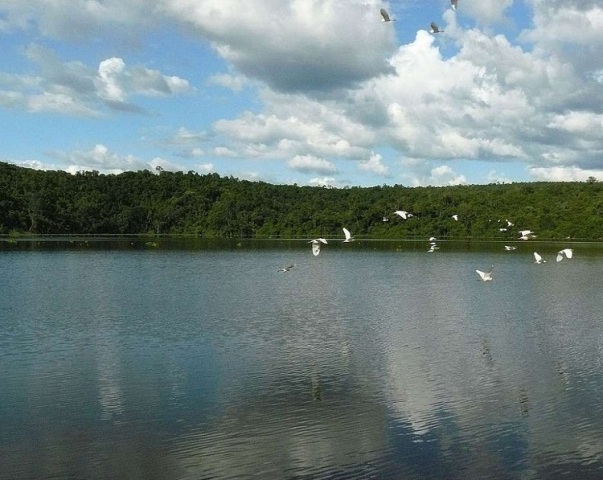Madagascar is an island located towards the east of Africa. To know some interesting and fun facts about Madagascar, read on.
Facts About Madagascar
Madagascar is an island located towards the east of the southern part of the African continent. Millions of years ago, it was a part of the Gondwana land. Around sixty million years ago, it broke off to become a separate island. The people of Madagascar are found to have Malayo-Indonesian and African-Arab ancestry. Indonesians migrated to the island in around 8th century AD. From 1787 to1810 the land was ruled by King Andrianampoinimerina and later his son, Radama I integrated much of the land, which comprise Madagascar today. The island was first sighted by Diego Dias, the Portuguese explorer, at the beginning of the sixteenth century. The Dutch, English and French traders followed the Portuguese to the island. Madagascar became a French colony in 1896 and in 1946; it became an Overseas Territory of France. Finally, Madagascar acquired full freedom in the year 1960. To know some more interesting and fun facts about Madagascar, read on.

Image: By Frank Vassen from Brussels, Belgium [CC-BY-2.0 (http://creativecommons.org/licenses/by/2.0)], via Wikimedia Commons
Fast Facts
Location: Madagascar is an island in the Indian Ocean off the coast of Mozambique in southern Africa
Area: 587,041 sq. km
Capital: Antananarivo
Population: 21,315,135 (2011)
Official Languages: Malagasy, French
Currency: Malagasy ariary
Independence Day: 26 June, 1960
Dialing Code: +261
Type Of Government: Republic
Interesting And Fun Facts About Madagascar
- In the Malagasy language, Madagascar is called Madagasikara and the natives of the place are known as Malagasy. But, the name ‘Madagascar’ was not given by the locals rather by the Europeans during the medieval period.
- Madagascar was renamed as Democratic Republic of Madagascar in 1975 and finally given the name ‘Republic of Madagascar’ in 1993.
- The official languages of the country are Malagasy, French and English.
- The capital of Madagascar is Antananarivo, while its currency is Malagasy Ariary.
- People living in the country, who are 18 years and above, have the right to elect their government as well as their President.
- Madagascar is the fourth largest island in the world. Its coastline is as long as 4828 km.
- Mountains are situated in the center of the island, the highest being Maromokotro, which is as high as 2876 m.
- Madagascar has a narrow coastal plain. It is the world's largest producer and exporter of vanilla.
- The majority of the people in the country have indigenous beliefs with regard to religion. This follows a relationship between the living and the dead.
- Madagascar boasts of unique flora and fauna, majority of which is not found anywhere else in the world. Almost half of the world's chameleons (about 60 different species) are found only in Madagascar.
- The country is also referred to as the Red Island, due to the red color of its soil.
- The Royal Hill of Ambohimanga is a World Heritage site and consists of a royal city, burial site and a number of sacred places.
- The highest point in Madagascar is Maromokotro.
- As much as 5% land of the country is under cultivation. Crops including coffee, vanilla, sugarcane, cloves, cocoa, rice, cassava (tapioca), beans, bananas and peanuts are grown here. Livestock products are also grown in the island.
- Nearly half of the land of Madagascar is covered with forest.
- Due to soil erosion and deforestation, many of the plants and animals found in the island have been categorized as endangered species.
- There are a lot of variations in the climatic conditions of the entire island. While the east coast receives monsoon, the climate is wetter in the northern part of the country and the southern tip is covered with cactus-like plants, which give a semi-deserted look to the portion.
- It would be interesting to know that as much as 52% of the total population of Madagascar follows animist beliefs, while 41% follows Christianity. The remaining popular predominantly follows Islam.
- Over the years, the country has emerged as a hot tourist spot, largely due to the hospitality of its residents and the means of entertainment adopted by them, to amuse their guests.
- The Island of Madagascar has an abundant reserve of natural resources including graphite, bauxite, quartz, salt, semi-precious stones, tar sands, coal, fish, chromite and hydropower.
- The most important industries of Madagascar are meat processing, breweries, sugar, textiles, soap, glassware, car assembly plant, tanneries, cement, paper, petroleum industries.
See also
More from iloveindia.com
- Home Remedies | Ayurveda | Vastu | Yoga | Feng Shui | Tattoos | Fitness | Garden | Nutrition | Parenting | Bikes | Cars | Baby Care | Indian Weddings | Festivals | Party ideas | Horoscope 2015 | Pets | Finance | Figures of Speech | Hotels in India : Delhi | Hyderabad | Chennai | Mumbai | Kolkata | Bangalore | Ahmedabad | Jaipur
- Contact Us Careers Disclaimer Privacy Policy Advertise With Us Lifestyle Sitemap Copyright iloveindia.com. All Rights Reserved.







